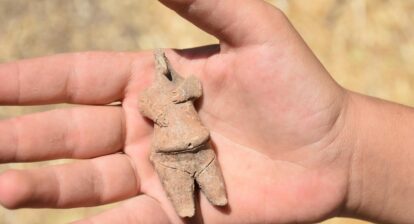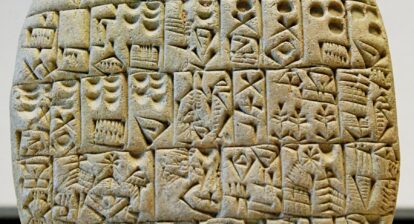In the first episode of the TV show Vikings, a bunch of Vikings set out for that island across the North Sea, which we know as England. They landed on a smaller island called Lindisfarne that had a monastery, which they destroyed. That part of the show was true.
The Vikings did come across to England and their first stop was a small island on the northeastern coast of England – an island known as Lindisfarne. Its old Celtic name was Medcaut. And I just went to see it.
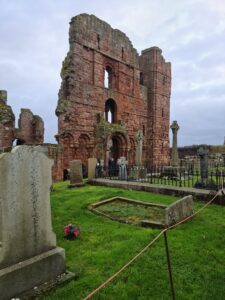
Ruins of Lindisfarne Priory. Image: 360onhistory.com
The Vikings had landed on Lindisfarne on and off in the eighth century AD, however their most significant visit was in 793AD.
According to the Entry for the year 793 in the Anglo-Saxon chronicle, “AD. 793. This year came dreadful fore warnings over the land of the Northumbrians, terrifying the people most woefully: these were immense sheets of light rushing through the air, and whirlwinds, and fiery dragons flying across the firmament. These tremendous tokens were soon followed by a great famine: and not long after, on the sixth day before the ides of January in the same year, the harrowing inroads of heathen men made lamentable havoc in the church of God in Holy-island, by rapine and slaughter.”
The Viking invasion in 793AD was barbaric and savage. They massacred the Christian monks, who lived there and carried prisoners off to their ships to be taken back home as slaves. This effectively started the Viking age in England. However, Lindisfarne (or Holy Island) had been inhabited before that. Middle Stone Age people were here from about 8000BC and New Stone Age people from 3000BC. We know this from the rubbish that they left behind. During the Roman Empire, Britons probably had a village here as well.
Since the seventh century AD, this island became a holy one. The story begins with the fatherless and exiled children of Aethelfrith, Anglo-Saxon king of Northumbria, recently killed in battle, who were sent off to the island of Iona on the west coast of Scotland. Iona was home to a monastery of Irish monks, but the four children were not Christian. The monks took care of them and baptised them. One of the children, Oswald decided to take back his father’s kingdom on the Northumbrian coast. When he became king, and one of the most powerful ones of all the northern kings at that, he asked the monks of Iona to send missionaries to convert the pagan people of Northumbria. The monks sent Aidan.
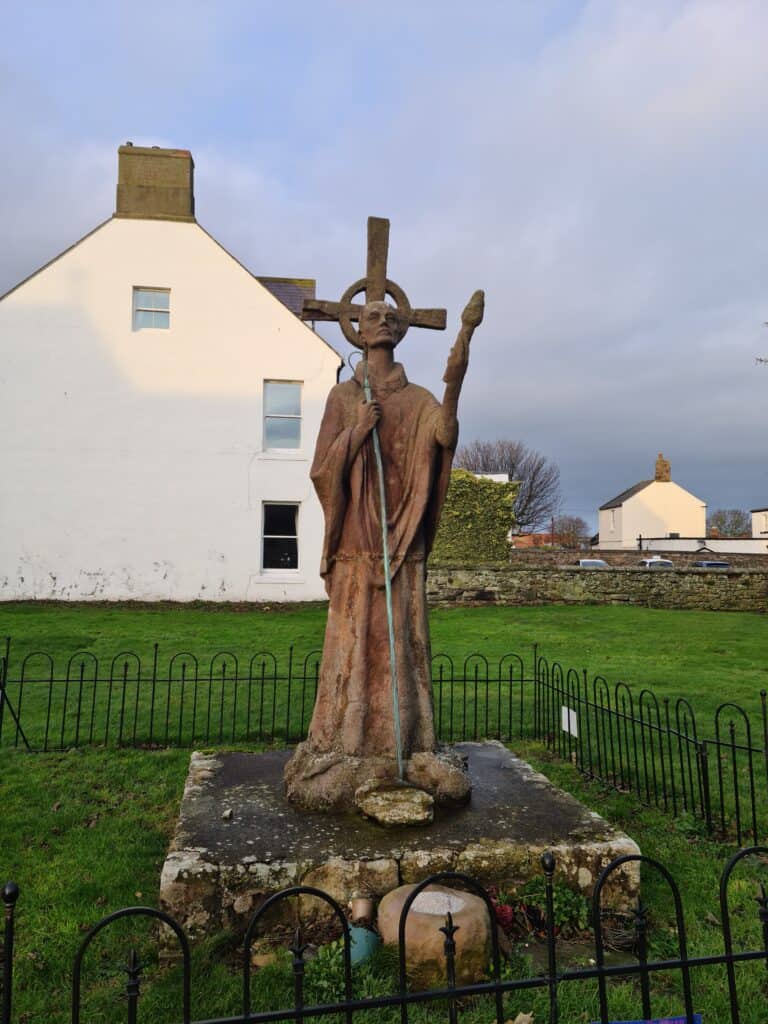
Statue of St Aidan at Lindisfarne. Image: 360onhistory.com
Aidan founded a monastic cathedral on Lindisfarne in 635AD, known as the Lindisfarne Priory and from here spread Christianity across Northumberland and the rest of England. He was the first bishop of the Priory and came to be known as the Apostle of Northumbria. He died in 651AD at Bamburgh, was buried at Lindisfarne, beneath the abbey and was venerated as a saint. We know about him from the Venerable Bede’s Ecclesiastical History of the English Nation.
The same year that St Aidan founded the Priory at Lindisfarne, 635AD, another boy, known as Cuthbert, was born. He was brought up a Christian and when he was 17 years old, he was looking after some neighbour’s sheep on the hills. (He was not a shepherd boy, so it is possible that he was mounting a military guard, which was a suitable occupation for a young warrior at that time). Gazing into the night sky he saw a light descend to Earth and then return, escorting, he believed, a human soul to Heaven. The date was August 31st 651AD – the night that Aidan died.
Perhaps he was already thinking of becoming a monk, but when he saw this light he went to the monastery at Melrose, which was also founded by St Aidan and became a novice there. He became the abbot of Melrose and subsequently of Lindisfarne, where he moved at the age of 30. He lived there for a decade, ran the monastery and was famous as a spiritual guide and spiritual healer. When he was 40, he became a hermit and lived alone on an islet close by and then moved to a larger island known as Inner Farne. He built a hermitage at Inner Farne and lived there for 10 years. At the age of 50 he was asked to become a bishop by both the Church and the King, which he did, travelling just like Aidan and spreading Christianity.
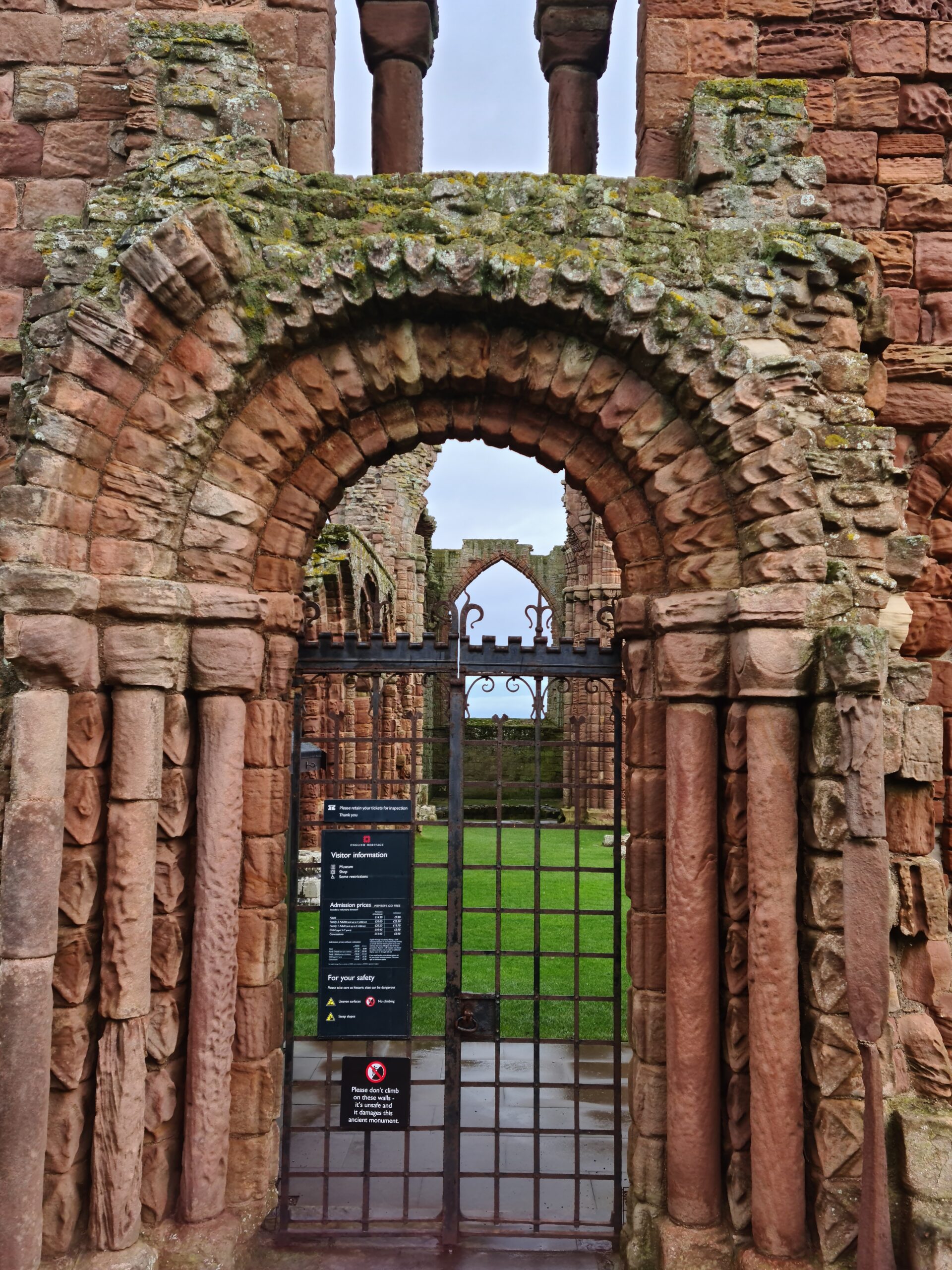
Ruins of Lindisfarne Priory. Image: 360onhistory.com
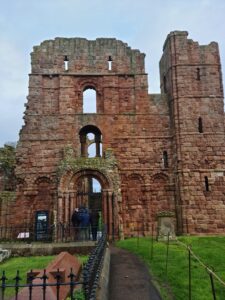
Ruins of Lindisfarne Priory. Image: 360onhistory.com
When he felt that he was going to die he moved back to Inner Farne and in the company of Lindisfarne monks, he died on March 20th 687AD. He was buried at Lindisfarne. After 11 years the monks decided to elevate him as a saint. When they opened the coffin, they found no skeleton but a complete and undecayed body. To the monks and the Church, this was a sign of great sainthood, and this was also the beginning of the Cult of St Cuthbert. Pilgrims started visiting the site in droves.
Until that is 793AD – when the Vikings arrived. They killed some of the monks and took the younger men and boys as slaves. Gold and silver were taken, and the monastery was partially burned down. From then on till the ninth century AD, the remaining goods and buildings were moved to the mainland due to the constant threat of Viking attack. According to tradition, Lindisfarne was completely abandoned in 875AD.
The body of St Cuthbert, together with other relics and treasures, which had survived the Viking attack, were carried by the monks and villagers onto the mainland. He was finally reburied at the Norman built Durham Cathedral in 1104. His remains were once again opened and were again found to be a complete body. The coffin was again opened in 1827 and 1899 a skeleton was found. They were reburied at the same place and this area is now the site of pilgrimage to this day.
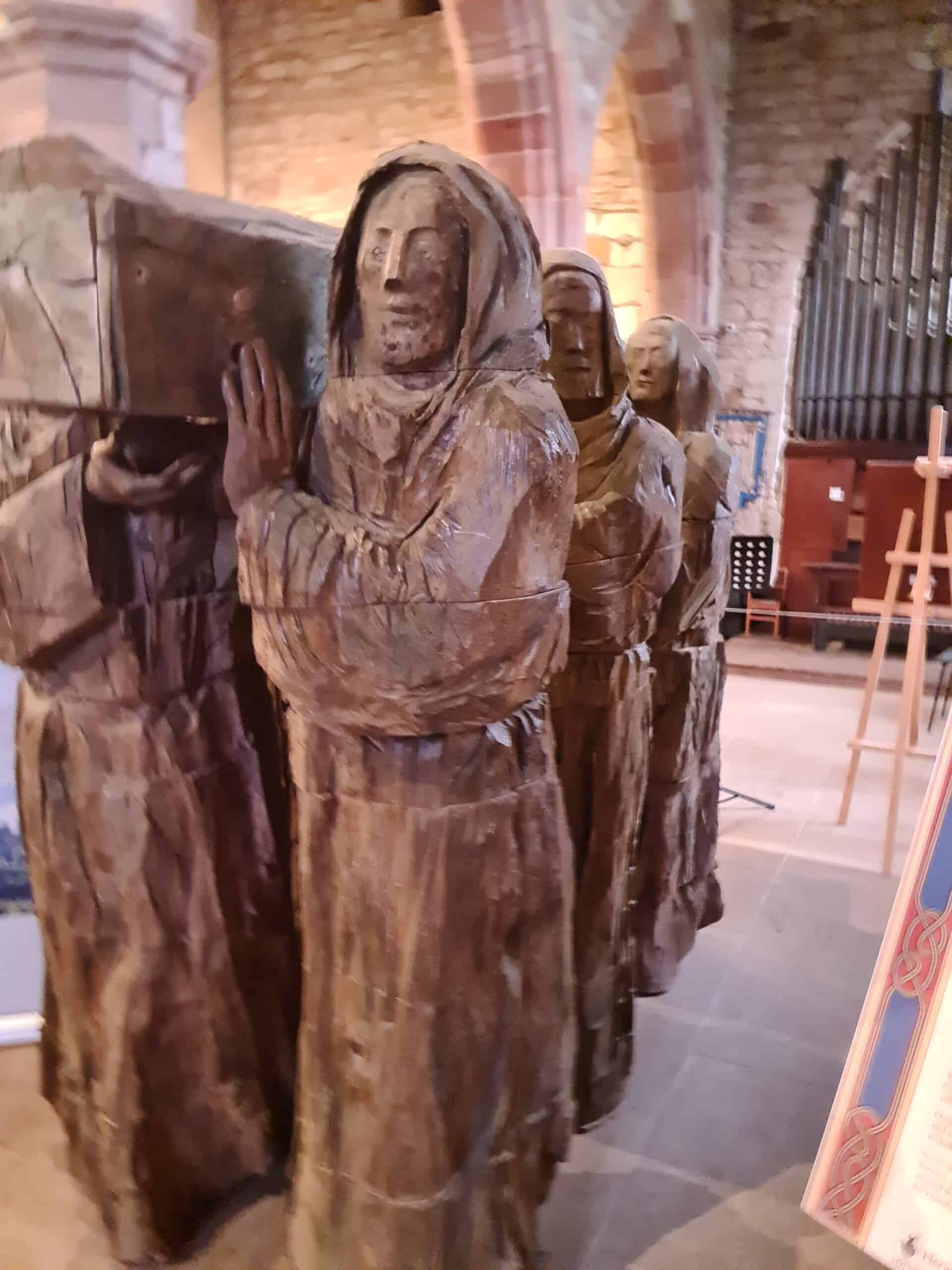
Statue of monks carrying St Cuthbert’s coffin out of Lindisfarne, kept at St Mary’s Church. Image: 360onhistory.com
After 1104, the Durham monks re-established a priory on Lindisfarne, which also remains a site of pilgrimage and prayer. They built a richly decorated priory church in c. 1150, the ruins of which still stand with their famous rainbow arch. The small community of monks lived quietly on Holy Island until the suppression of the monasteries in 1537 by King Henry VIII.
There are also three churches on the island, which offer daily worship.
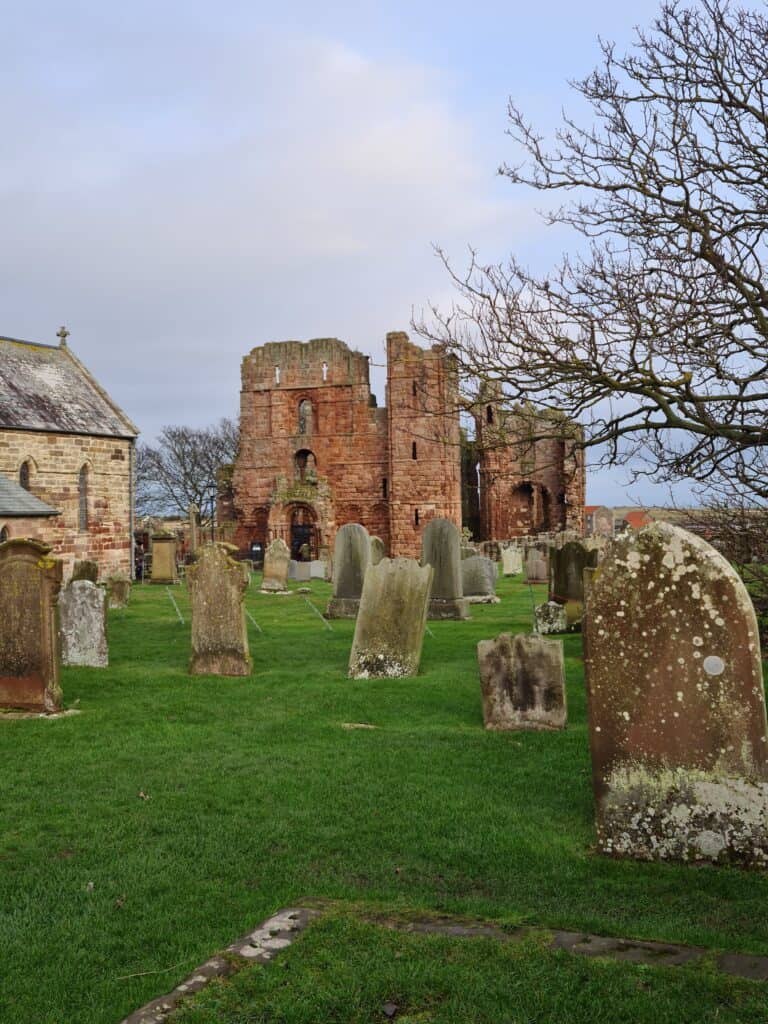
Ruins of Priory at Lindisfarne. Image: 360onhistory.com
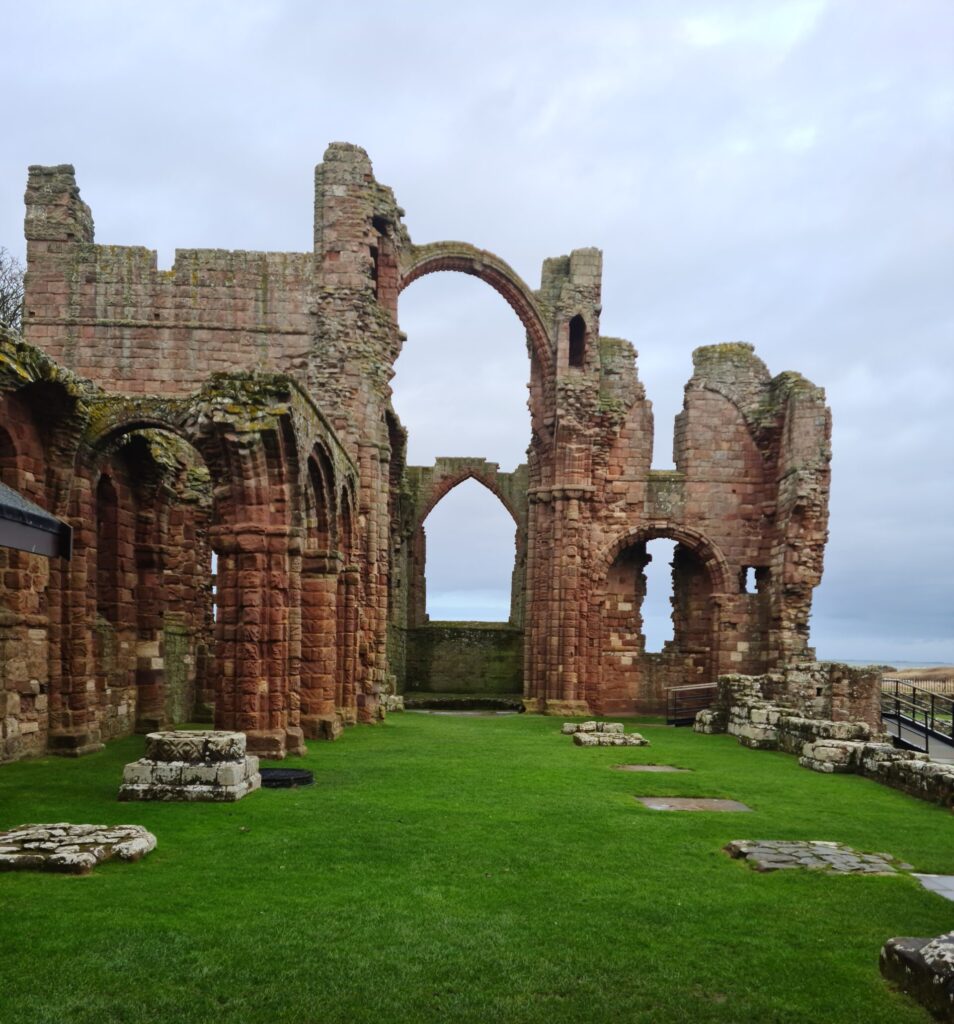
Ruins of Priory at Holy Island Lindisfarne by 360onhistory.com
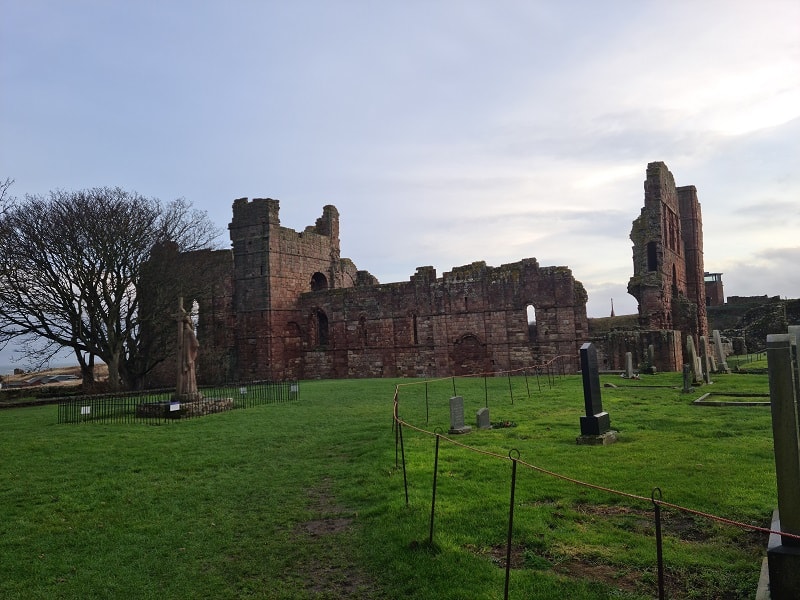
Ruins of Priory at Lindisfarne. Image: 360onhistory.com
Lindisfarne Gospels
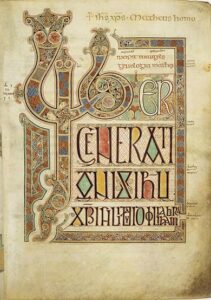
Lindisfarne Gospel Folio 27. CC BY

Lindisfarne Gospel Chi Ri Ho. CC BY
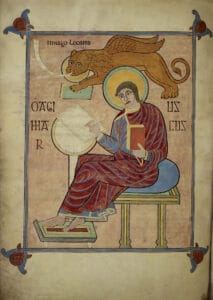
Lindisfarne Gospel depicting St Mark CC BY
![]()
During the 11 years that Cuthbert was buried, before his elevation, it is believed that the Lindisfarne Gospels were written. They may have been written in honour of this event. The two covers of the beautiful Gospels have vanished, but the manuscript has survived. They are now part of the collection at the British Library in London.
I still have to see the Gospels but the experience at Lindisfarne with its amazing coastline and the remains of the Priory, as well as the Churches was indeed amazing. There is also a castle high atop a cliff. It is a 16th-century castle and was much altered by Sir Edwin Lutyens in 1901. To get to Lindisfarne from the mainland, you must cross a causeway, which floods at high tide, so you have to check the tide timings to cross. There is also an ancient pilgrims’ path that runs over sand and mudflats, and which is also covered with water at high tide.
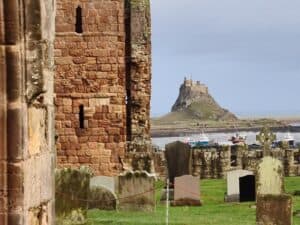
Prior ruins, cemetary and Castle in the far distance at Lindisfarne. Image: 360onhistory.com
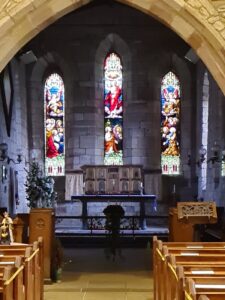
St Mary’s Church at Lindisfarne. Image: 360onhistory.com
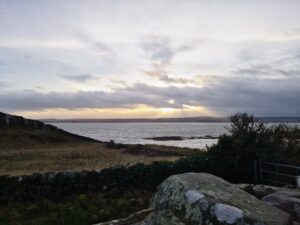
Coastline from Lindisfarne Island. Image: 360onhistory.com
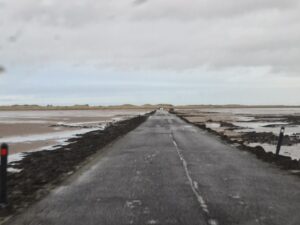
The causeway to Lindisfarne by 360onhistory.com

